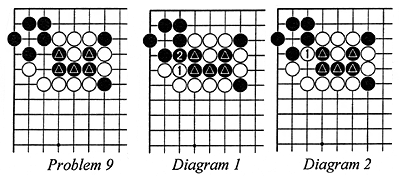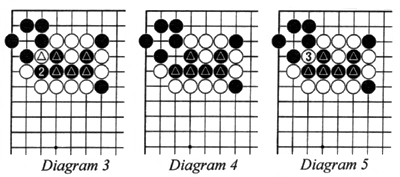Eio Sakata
Eio Sakata, along with Go Seigen and Cho Chikun, will go down in history as one of the great geniuses of 20th-century go. Go Seigen was the preeminent player of the 1940s and '50s, while Cho Chikun's reign began in the early 1980s and continues to this day.Sakata's go is marked by brilliant and unexpected moves, and, in his heyday, he had no rivals. This earned him the nickname "Razor Sharp."Sakata. In his career, he has won 64 titles, a record yet to be broken, although Cho Chikun is near to breaking it as he has 58 titles.
Sakata was born on Feb. 15, 1920. He made 1-dan in 1935 and was promoted to 9-dan in 1955. He made his first appearance in a title match in 1951, when he challenged Utaro Hashimoto for the Honinbo title. At that time, Hashimoto had broken away from the Japan Go Association to form the Western Japan Go Association, so Sakata, as the standard bearer of the Japan Go Association, must have felt tremendous pressure to take back this most prestigious of titles. He was on the verge of victory in this best-of-seven match, with three wins against one loss, but Hashimoto fought back to defend the title by a score of 4-3.
This was a humiliating start for Sakata's career in the big league, but in 1952 he won two newspaper-sponsored titles that heralded his coming domination of the tournament scene. After that, he won one title after another. Only one title eluded him--the Honinbo--but finally, in 1961, he won the Honinbo league and became the challenger for the title. He went on to defeat Kaku Takagawa, who had held the title for nine straight years, four wins to one loss. Then, in 1963, he won the Yomiuri-sponsored Meijin title to become the first Meijin-Honinbo of the modern era.
But in 1965, Sakata began his slow decline. That year, a 23-year-old player from Taiwan, Rin Kaiho became the challenger for Sakata's Meijin title. Everyone was surprised that Rin won the league, and, when he did emerge as the challenger, no one gave him much of a chance. The general feeling was that he would be lucky to win one game. Sakata even went so far as to boldly state, "No one in their 20s could ever become a Meijin."
Sakata handily won the first game of the match, but, to everyone's surprise, Rin won the next three games. Although Sakata managed to win the fifth after Rin made a mistake, he was completely outplayed in the sixth and final game, and a 23-year-old Meijin was born.
Sakata came back the next two years to challenge Rin for the Meijin title, but each time he was defeated in the title match by a score of 4-1.
Rin challenged him for the Honinbo title in 1967. Although Sakata beat Rin that year, Rin became the challenger again in 1968 and dethroned Sakata as the Honinbo, becoming the second Meijin-Honinbo of the modern era.
Sakata was still a force in the go world to be reckoned with--he won a number of major titles such as the Judan and Oza in the late '60s, but by 1970 a new breed of young players from the Kitani school, along with Rin, started to dominate the tournament scene.
Capturing techniques
Problem 9. In last week's column, you were asked to find the white move that would capture the five marked black stones. Clearly, White 1 in Diagram 1 would fail. Black would connect at 2 and all his stones are linked to his group in the corner. A more inspired move is required. White 1 in Diagram 2 is a clever move.Suppose Black captures the marked white stone with 2 in Diagram 3. The position in Diagram 4 would result. But the marked black stones are now one move away from being captured. Their only liberty being the point where the white stone was captured. Therefore, White can come back and capture the six marked black stones with 3 in Diagram 5. This capturing technique is known as "snapback."


Ladders

|
The sequence continues in Diagrams 8 and 9, but, when White arrives at the edge of the board, Black ataris with 13 and White has nowhere to go; Black can capture the seven white stones on the next move by playing at A.
Problem 10. In this problem, you have to capture the marked white stone in a ladder.


